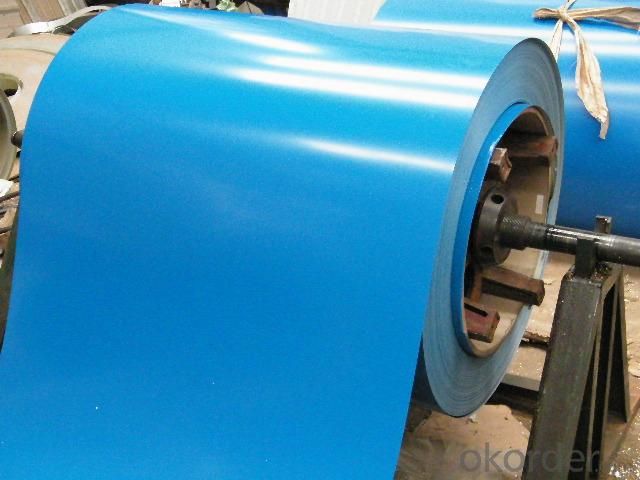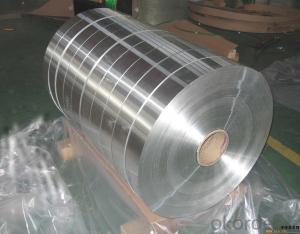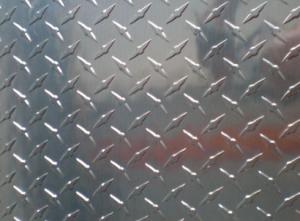HD Sublimation Coated Aluminum Metal White Sheets for Railcars
- Loading Port:
- Shanghai
- Payment Terms:
- TT or LC
- Min Order Qty:
- 5 m²
- Supply Capability:
- 9000 m²/month
OKorder Service Pledge
OKorder Financial Service
You Might Also Like
Aluminium Reflective sheet
Allou or No.: Alloy
Alloy No.: AA1050, AA1060, AA1070, AA1070
Temper: H18, H16, H24, H24
Thickness: 0.2-3mm
Width: 10mm-2200mm
Length:10mm-2200mm
Tensile strength: ≥140N/mm2
Elongation: ≥2%(H26)
Yield Strength: ≥120N/mm2
Usage: Lights, grille lamp, tunnel lamp, solar collector etc.

Product Description
Our aluminum sheets are designed to showcase fine art photo prints with the most brilliant colours, highest dynamic range and best contrasts of all available printing technologies. In contrast to normal direct flatbed printing on composite materials, sublimation aluminum sheets are sublimation boards, the photos are transferred through a printed transfer paper in a heat press.
Feature
1. Extremely durable scratch resistant surface that is waterproof and can be cleaned easily with a damp cloth.
2. Eco-friendly & Terrific as a decoration.
3. Longest lasting photo medium in the current market.
4. The high definition, vibrant colors coupled with superior fade, moisture, stain & scratch resistant properties.
5. The image is infused into the coating to provide permanent protection and durability.
6. Excellent choice for commercial, fine art, and home applications.
7. High quality, factory price.

Process
1. Get images from digital camera, memory card or scanner.
2. Print image with heat transfer paper and sublimation ink.
3. Lay down a teflon sheet and your panel, and another CLEAN teflon sheet on top
4. Tape the transfer to the face of the substrate with heat resistent tape running parallel to the edge of the substrate.
5. Lay substrate face up, transfer on top on a piece of telfon sheet on lower platen.
6. Cover with one layer of fabric, preferably 100% polyester or poly-silk, to distribute pressure and reduce stress on the coating.
7. Press for the prescribed time is 130sec., temperature is 180℃ and pressure is 0.25Mpa.
8. When finished, remove the fabric and gently peel the taped transfer off the substrate without allowing it to slide or move.
9. Let the substrate to cool. Do not handle it until cool to reduce the chances of damaging the coating on the edges.
10. Enjoy your personal designed aluminum board!

- Q: How do you store aluminum sheets?
- To store aluminum sheets, it is important to consider their size, weight, and overall condition. Here are some steps you can follow: 1. Choose a suitable location: Find a dry and well-ventilated area with stable temperatures, preferably indoors. This will help prevent moisture and humidity from causing corrosion or damage to the aluminum sheets. 2. Protect against moisture: Use plastic or moisture-resistant sheets to wrap each aluminum sheet individually. This will create a barrier against moisture and prevent any potential corrosion. Avoid using materials that may react with aluminum, such as acidic or alkaline substances. 3. Organize and stack: If you have multiple aluminum sheets, consider organizing them based on their size, thickness, or other relevant factors. This will make it easier to access specific sheets without disturbing the entire stack. When stacking the sheets, place larger and heavier ones at the bottom to avoid any potential damage. 4. Utilize racks or pallets: If you have a larger quantity of aluminum sheets, using racks or pallets can provide additional support and stability. Ensure the racks or pallets are strong enough to handle the weight and are designed to prevent any deformation or bending of the sheets. 5. Label and document: It is helpful to label each sheet with relevant information such as size, thickness, or any specific details. Additionally, keeping a detailed inventory or catalog of your aluminum sheets can help you easily locate and retrieve specific ones when needed. 6. Regular inspection: Periodically inspect your stored aluminum sheets to ensure they remain in good condition. Look for signs of corrosion, damage, or any other issues that may require immediate attention. By following these steps, you can effectively store aluminum sheets, protecting them from damage and ensuring their longevity.
- Q: Can aluminum sheets be perforated?
- Indeed, it is possible to perforate aluminum sheets. Perforating entails either punching holes or generating a pattern of holes in a material. Aluminum, being a flexible and adaptable metal, can be easily perforated through a variety of techniques like punching, drilling, or laser cutting. The perforation of aluminum sheets can have numerous applications, including facilitating airflow, reducing weight, improving aesthetics, or constructing filtration systems. The dimensions, form, and layout of the perforations can be tailored to satisfy particular demands and design preferences. In summary, perforating aluminum sheets can effectively enhance their functionality and visual allure.
- Q: Can aluminum sheets be used for architectural cladding?
- Yes, aluminum sheets can be used for architectural cladding. Aluminum is a popular choice for cladding due to its durability, lightweight nature, and resistance to corrosion. It is commonly used in both residential and commercial buildings for its aesthetic appeal and versatility in various architectural designs.
- Q: what will happen when aluminum sheet is put into copper chloride solution?
- the chemical equation of the reaction, 2Al+3CuCl2=2AlCl3+3Cu, the phenomena when aluminum sheet is put into copper chloride solution: there is red solid generating on the surface of aluminum sheet.
- Q: Are 101 aluminum sheets suitable for marine environments?
- Indeed, marine environments are indeed suitable for 101 aluminum sheets. Recognized for its exceptional corrosion resistance, 101 aluminum is a high-strength alloy that proves to be perfect for marine applications. It can endure the harsh circumstances of saltwater, including exposure to salt spray and water immersion, without undergoing corrosion or deterioration. Furthermore, 101 aluminum possesses commendable weldability and formability, enabling it to be effortlessly shaped into a multitude of marine components like boat hulls, decks, and equipment. The strength, durability, and corrosion resistance of 101 aluminum sheets establish them as a dependable option for marine environments.
- Q: What are the necessary safety measures to be aware of when handling aluminum sheets?
- <p>When working with aluminum sheets, it's crucial to wear appropriate personal protective equipment (PPE), including gloves to prevent cuts and eye protection to shield against flying debris. Ensure good ventilation to avoid inhaling dust or fumes from cutting or polishing. Use sharp tools to minimize the risk of accidents and always cut away from your body. Keep the work area clean and free of clutter to prevent slips or trips. Be cautious of electrical hazards if using power tools, and ensure all tools are properly grounded. Finally, be aware of the fire hazard potential of aluminum dust and store it safely away from ignition sources.</p>
- Q: Are aluminum sheets fire resistant?
- Yes, aluminum sheets are fire resistant.
- Q: Are aluminum sheets suitable for automotive body framing?
- Yes, aluminum sheets are suitable for automotive body framing. Aluminum is lightweight, corrosion-resistant, and offers excellent strength-to-weight ratio, making it an ideal choice for reducing vehicle weight and improving fuel efficiency. It is commonly used in modern automotive manufacturing for body panels and frames, providing structural integrity while maintaining durability.
- Q: What are the different methods of surface passivation for aluminum sheets?
- There are several methods of surface passivation for aluminum sheets, including anodizing, chromate conversion coating, and organic coatings. Anodizing involves creating a protective oxide layer on the surface of the aluminum through an electrochemical process. Chromate conversion coating is a chemical treatment that converts the aluminum surface into a thin chromate film, providing corrosion resistance. Organic coatings, such as paints or lacquers, can also be applied to aluminum sheets to provide a protective barrier against moisture and other environmental elements.
- Q: Are aluminum sheets suitable for aviation applications?
- Yes, aluminum sheets are highly suitable for aviation applications. Aluminum is a lightweight material with excellent strength-to-weight ratio, making it ideal for aircraft construction. It offers good corrosion resistance, high durability, and can withstand extreme temperatures. Additionally, aluminum sheets are easy to fabricate and can be formed into complex shapes, making them a preferred choice for various components and structures in the aviation industry.
Send your message to us
HD Sublimation Coated Aluminum Metal White Sheets for Railcars
- Loading Port:
- Shanghai
- Payment Terms:
- TT or LC
- Min Order Qty:
- 5 m²
- Supply Capability:
- 9000 m²/month
OKorder Service Pledge
OKorder Financial Service
Similar products
Hot products
Hot Searches
Related keywords




























